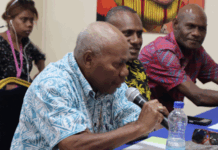A further 300 people listed as “uncontactable” in New Zealand in the aftermath of Cyclone Gabrielle have been found.
About 800 people in Hawke’s Bay and Tai Rāwhiti were still registered as unaccounted for, Hawke’s Bay Urban Search and Rescue team leader Ken Cooper told RNZ Morning Report.
Cooper said police and Fire and Emergency were working closely together and a lot of detective work was going on to establish whether people listed were missing or safe.
- LISTEN TO RNZ MORNING REPORT: Searching for unaccounted for people in Hawke’s Bay
- Other Cyclone Gabrielle reports
“Where there is a reported missing person and a location of interest, that’s where USAR can take all reasonable steps.
“The challenge we’ve got right now is that we have had people reported as unaccounted for but we haven’t got locations of interest, or we don’t know where they’ve been last reported.”
That left searchers struggling to pinpoint where they should be looking, he said.
“The important thing is, if you have reported someone missing or unaccounted for could you please get in touch with New Zealand police.
“We’d like to have more information so that we can narrow our search down and bring this to a swift conclusion.”
Update police
That included making sure to update police if a person reported missing was found.
USAR had 120 people on the ground, including Australian search teams.
The NZ Defence Force provided at least 40 people a day, there were extra police and Land Search and Rescue personnel.
He said UASR had not encountered this type of terrain before and conditions were extremely difficult for searching.
There were new challenges as the weather improved.
“As the silt and the effluent is drying and people are driving through it and the clear up is really progessing well the dust potentially contains some contaminants and pathogens that are a public health risk.
“That’s a risk to the public and obviously to our rescue workers in the field.”
Cooper said they had covered 2000 properties in a wide area search.
Rescue teams had carried out detailed searches of 600 properties where it was reported someone might be in the house, and had been through a further 620 properties in cases where someone was reported missing.
This article is republished under a community partnership agreement with RNZ.













































